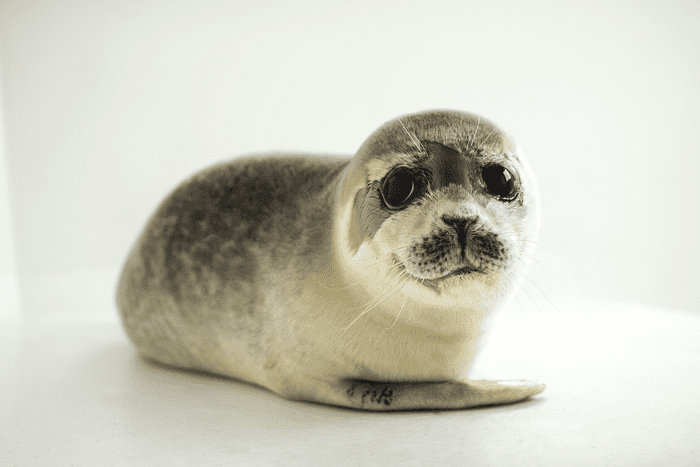
In the 1980s, one of the biggest attractions at the New England Aquarium was Hoover the Talking Seal. The name says it all, as Hoover was famous for parroting human speech. The female seal was rescued as a pup by a man from Maine who took Hoover home before moving to the aquarium. During this time, Hoover remarkably learned how to imitate some of his owner’s vocal antics, including the Maine accent.
You can clearly hear the seal saying “Hoover get over here! Come on, come on!” in this 1984 recording.
Vocal learning — the ability to acquire vocalization through learning — is very rare in the animal kingdom. However, scientists are very much interested in this trait as it may reveal the evolutionary path that took our ancestors from blabbering primates to the highly articulated beings we are today, capable of conveying speech, singing, and a wide ranging vocal repertoire.
Besides humans, this ability is often restricted to birds, which are, evolutionarily-speaking, as far away from us as dinosaurs are. This is why Hoover’s story is so important since seals seem to be one of the rare examples of vocal control and plasticity in mammals. But is this quality present across the species or was Hoover just some oddball?

This inquiry inspired Andrea Ravignani from the Max Planck Institute for Psycholinguistics to conduct a new study that investigated the vocalization abilities of seals. Ravignani and colleagues studied eight harbor seal pups no older than three weeks that were held in captivity at a rehabilitation center in the Netherlands before being released back into the wild.
Over the course of several days, the pups were exposed to audio recordings of noises from the nearby Wadden Sea. These recordings were not chosen by accident. Co-author Laura Torres Borda of the University of Paris 13 went there with a microphone to record the natural noises of the sea because that’s what seal pups are used to in their natural habitat.
“The main challenge was to design the experiment in a way which would be meaningful to better understand the origins of human speech,” Ravignani said.
The recordings were played back at three volumes, varying from almost silence to 65 decibels (equivalent to the noise made by a fast car at 25 feet away), but with a similar tone to that of the seal pups’ calls.
Humans and animals alike raise their voices when there’s noise in the environment so they’re heard and understood better. This is known as the Lombard effect, and one seal clearly demonstrated this phenomenon, producing louder calls when the audio levels were higher. But that’s not all they did.
“If baby seals acted as most animals, we would just expect them to increase the intensity of their voices as noise increased. However, what seals did was lower the pitch of their voices to escape the frequency range of noise, something that only animals with good control of their larynx (including humans but potentially excluding most mammals) can do. This shows vocal plasticity in seal pups from an early age, suggesting that seals may be one of the very few mammals which, like humans when singing or speaking a tonal language, can flexibly modulate the pitch of their voices,” Ravignani told ZME Science.
The fact that seals can modulate their vocalizations spontaneously and without training is striking. Even chimps, our closest living relatives, cannot do this, which makes the origin of speech perhaps even more mysterious. Humans are the only mammals that we know of that have a direct neural connection between the cortex and the larynx (the organ at the top of the neck that is responsible for the tone of your voice). Perhaps seals share this neural connection as well, which is what scientists intend to find out.
“In general, this work is part of my larger research agenda aimed at establishing seals as prime animal model species to better understand the origins and evolution of human speech and music. While at first, they may seem an unusual model, they offer untapped potential for comparative research, being more closely related to us than the much-studied songbirds and parrots, while spontaneously showing more music-like and speech-like behaviors than say apes and monkeys,” Ravignani said.
Just last week, researchers from the same Max Planck Institute for Psycholinguistics found that a type of lemur from Madagascar, known as the indri, has songs that exhibit a kind of rhythm only previously seen in humans. Together with seal vocalizations, these findings suggest that various building blocks for human speech may be found across different animal species. It’s just that we’ve somehow been lucky enough to put them all together.
“By finding another mammal who can modulate the pitch of its voice, we can start building an evolutionary tree of building blocks of speech, and show that some of these are not in fact uniquely human,” Ravignani said.
The findings appeared in the journal Philosophical Transactions of the Royal Society B Biological Sciences.


